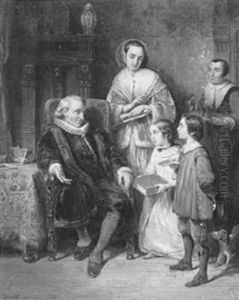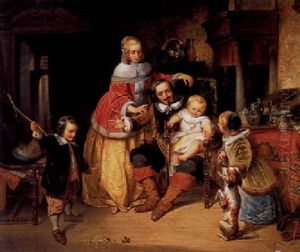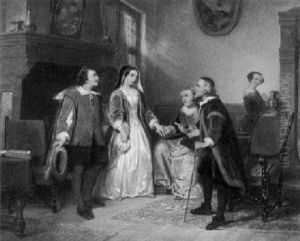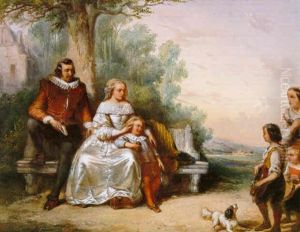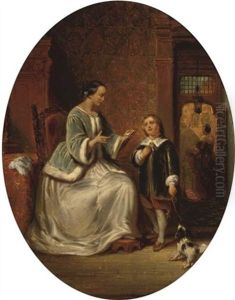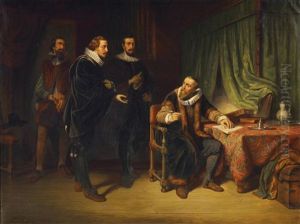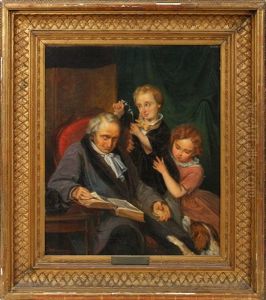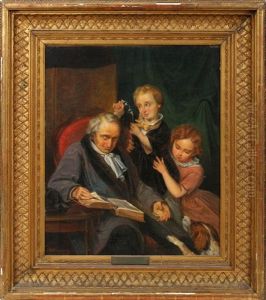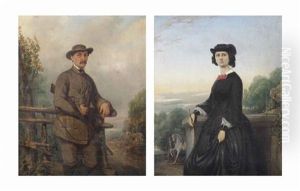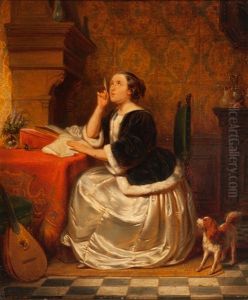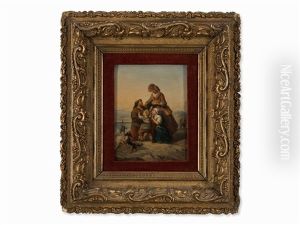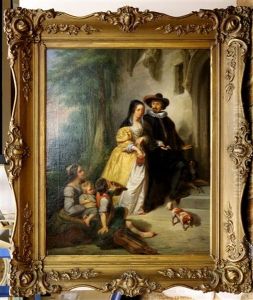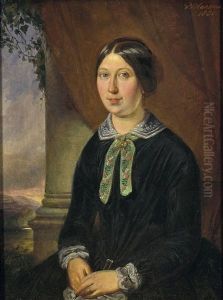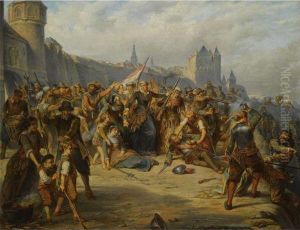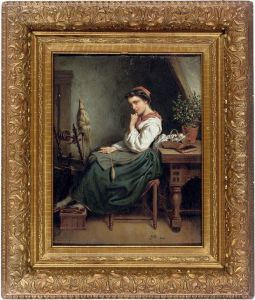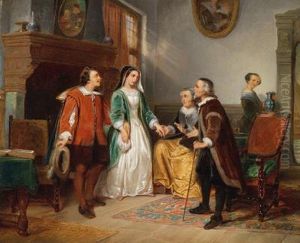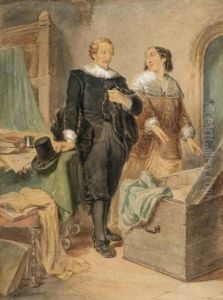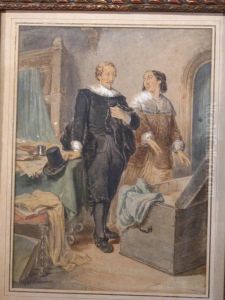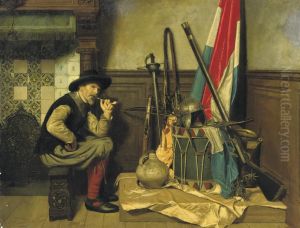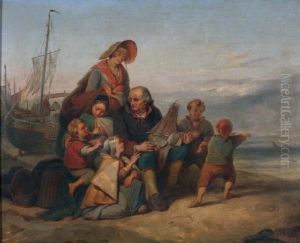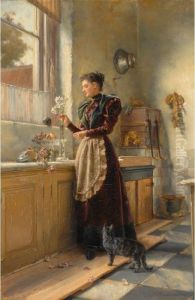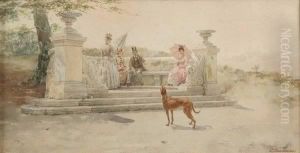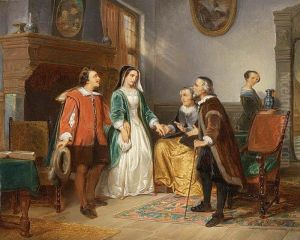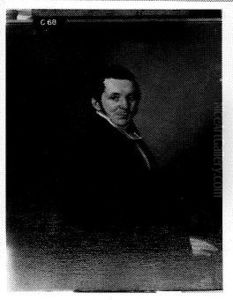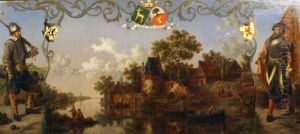Pieter Alardus Haaxman Paintings
Pieter Alardus Haaxman, born in the year 1814 and passing away in 1887, was a notable Dutch painter whose contributions to art are remembered for their historical significance and cultural depictions. His life spanned a period of great change in Europe, witnessing the aftermath of the Napoleonic Wars, the rise of Romanticism, and the early stirrings of the Industrial Revolution. Haaxman was part of a generation of artists who sought to capture the essence of their national history and identity through their works.
Hailing from the Netherlands, Haaxman's early life was marked by an immersion in the rich artistic traditions of his country. The Netherlands had a long-standing reputation for producing exceptional painters, and Haaxman's upbringing was no doubt influenced by the works of Dutch masters such as Rembrandt and Vermeer. Despite the lack of detailed records about his early education in art, it is evident that Haaxman developed a keen interest in painting from a young age, which set the foundation for his later career.
Throughout his career, Haaxman focused on historical scenes and portraits, capturing the essence of Dutch history and society. His works are characterized by a meticulous attention to detail and a commitment to realism, traits that were highly valued in the Dutch artistic tradition. He was known for his ability to convey the emotional depth of his subjects, whether depicting a momentous historical event or the intimate portrait of a historical figure.
Haaxman's contributions to Dutch art were not limited to his paintings. He also played a significant role in the artistic community as a teacher, passing on his knowledge and skills to the next generation of artists. His influence extended beyond the canvas, contributing to the development of a distinctly Dutch school of painting that celebrated national heritage and historical narratives.
Despite his contributions, Pieter Alardus Haaxman is not as widely known as some of his contemporaries. Nevertheless, his works remain an important part of the Netherlands' artistic legacy, offering insights into the country's past and the evolution of Dutch art. His paintings continue to be appreciated by art historians and collectors for their historical value and artistic merit.
Haaxman's death in 1887 marked the end of a career that had spanned several decades, during which he had witnessed and contributed to significant periods of artistic and societal change. Today, his legacy lives on through his paintings, which continue to be studied and admired for their portrayal of Dutch history and culture.

